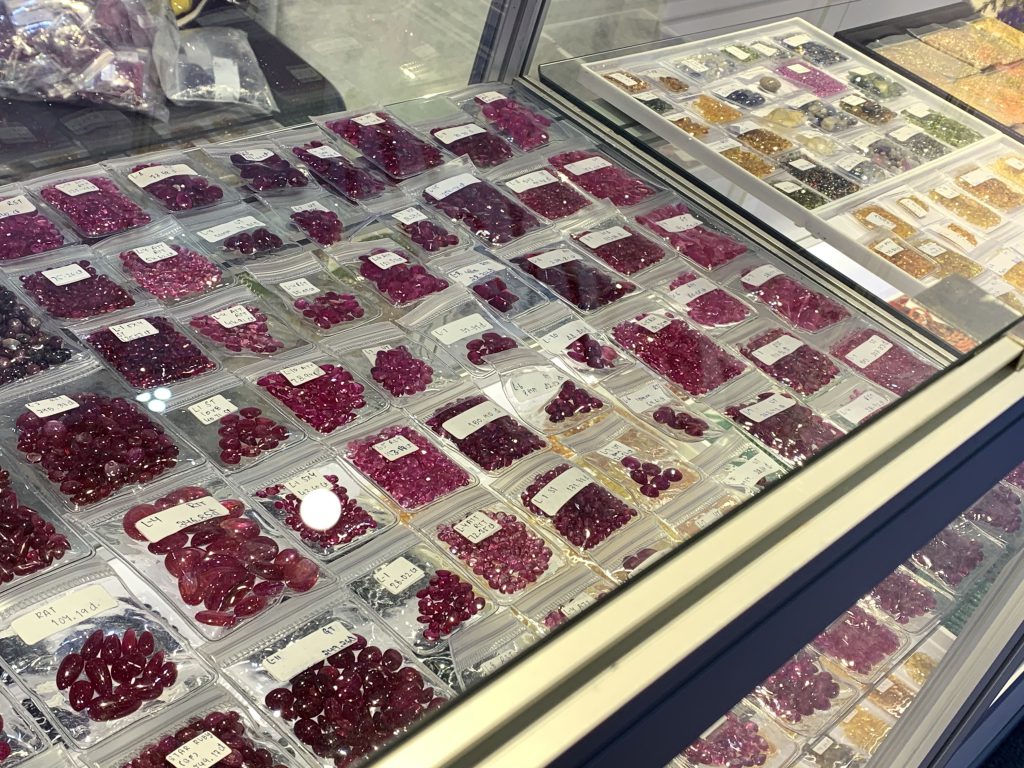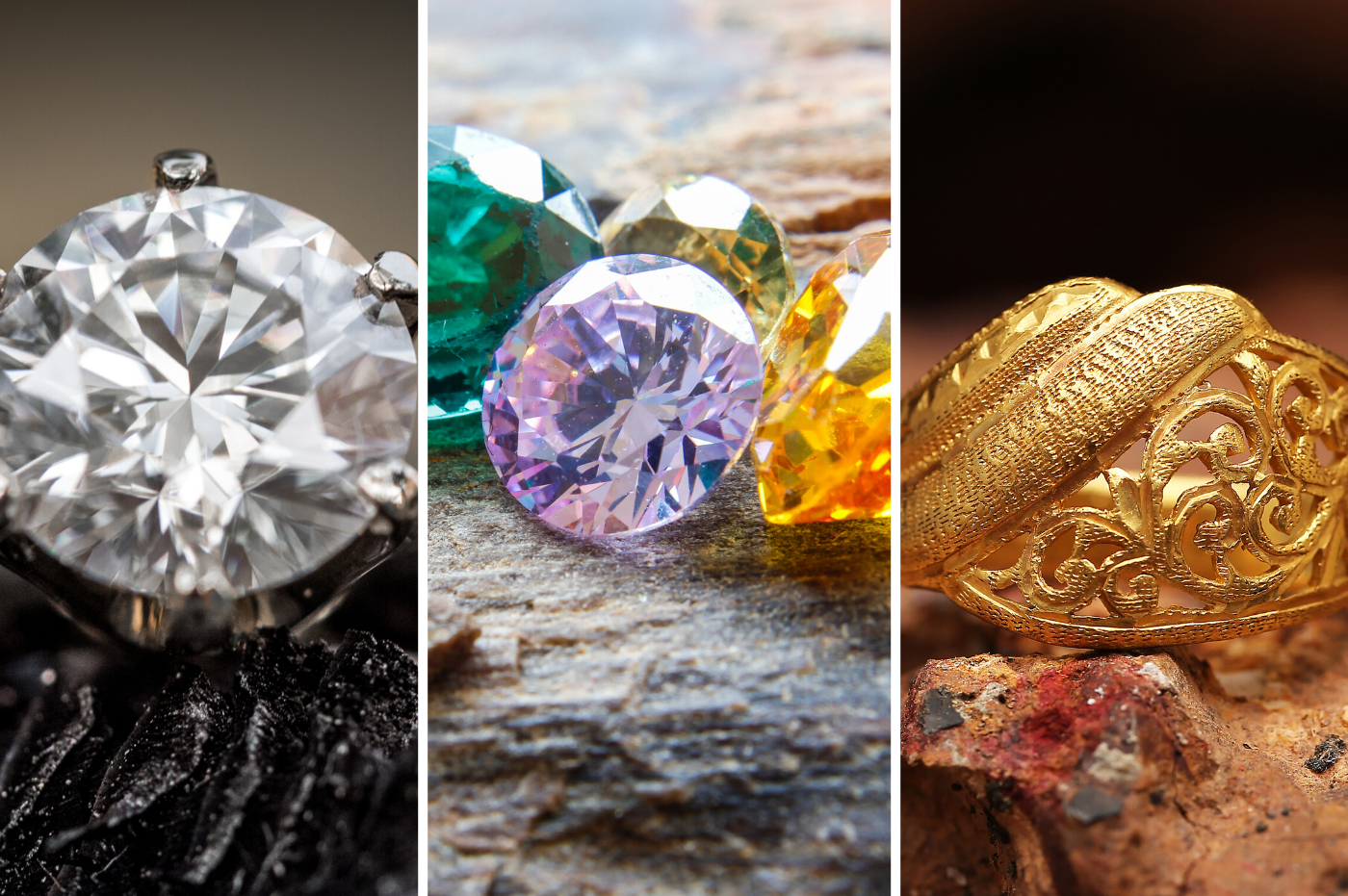By David Brough
Gold prices have been buoyant during the coronavirus pandemic due to the yellow metal’s “safe haven” appeal, while diamonds trade is resuming slowly amid signals of a longer-term recovery.
Mid-market coloured gemstone prices are expected to soften as the economic downturn bites, but at the top end of the market gem and jewellery prices will remain resilient, dealers say.
Gold seems poised for longer term gains
Gold prices, not far below 7-1/2-year peaks, seem set for longer term upside if rock bottom interest rates prevail well into next year due to the impact of Covid-19 on the global economy.
Gold prices were up 0.60 percent at $1,724.58 per ounce on June 10, within sight of a more than 7-1/2-year high of $1,756.90 per ounce touched on May 18, according to Sharps Pixley and BullionByPost market data.
Fears that stock markets are poised for further losses triggered by expectations of dire second-quarter earnings due to the impact of the coronavirus pandemic, could underpin gold prices in the months ahead.
A potentially deep global recession spurred by the novel coronavirus could drag on shares and weaken the prices of other assets including property, possibly driving a flight of investor funds into relative safety in gold.
The reduction in interest rates in leading economies in response to the pandemic, part of wider monetary stimulus measures, could lead to currency debasement, seen as supportive to gold prices, according to a recent J.P. Morgan report.
Lawrie Williams, gold market commentator with bullion dealer Sharps Pixley, has referred to a “flood of buying” into major gold-backed exchange-traded funds (ETFs), indicating growing confidence among investors that gold is set for an upwards march.
“We think the momentum generated by the enormous flood of money going into the precious metals exchange-traded funds (ETFs) is indicative of things to come for the sector,” Williams wrote.
Gold’s fall in the first week of June, hastened by stronger-than-expected U.S. jobs data, may presage a renewed climb in prices of bullion as the global economic downturn tightens its grip.
Current price levels could represent a bargain opportunity, as investors take stock of the economic crisis, with U.S. unemployment levels still extremely high due to the impact of Covid-19.
Diamond markets seen shrinking in near term
Trade in diamond markets is resuming gradually amid signals of a longer-term recovery, with business shifting increasingly online.
Demand for diamonds and diamond jewellery plunged after lockdowns sparked by the pandemic led to the temporary shuttering of retail jewellery stores.
On the supply side, manufacturing in India, where most of the world’s diamonds are processed, is painstakingly starting up again, with reduced staff numbers.
“The cost of doing business is going to go up,” said Russell Mehta, managing director of diamond manufacturer Rosy Blue India, one of the world’s largest diamond traders.
“We have to re-think new technologies — and new ways of doing business so that all the costs are not passed on to the consumer.”
Indian manufacturers were expected to voluntarily pause imports of rough diamonds for one month from June 1 in order to reduce a supply overhang of polished diamonds.
A suspension of rough diamond imports would underpin the polished diamond market with dealers who hold inventory at old prices reluctant to sell at a big discount.
“Less rough supply in India during this period will mean that factories will cut and polish fewer diamonds, particularly with the new social distancing regulations in place,” said Jignesh Mehta, managing director of Mumbai-based polished diamond supplier Divine Solitaires.
“This will limit new polished diamond production.”
Trading on diamond exchanges in centres such as Antwerp, Mumbai and Tel Aviv, has resumed.
The next stage will be the reopening of retail stores.
Expectations of a deep global recession will eat into diamond demand in the near term and force the trade to re-consider how to connect diamond jewellery marketing to love and relationships.
“The diamond market will shrink in the short term because jewellery retail sales have drastically reduced in the past two to three months of lockdown, with e-commerce being the only game in town,” said Avi Krawitz, analyst with Rapaport, a leading trade platform for polished diamonds.
Miners Alrosa and De Beers have reduced their rough diamond production forecasts for 2020 due to the weak market.
The economic downturn will force the diamond market to realign its inventory.
“It also presents an opportunity for the diamond industry to strengthen its messaging as consumers look for meaningful connections after this weird period of quarantine,” Krawitz said.
“If it can do so effectively, the diamond and jewellery sector can gain market share in the long run.”
The recent launch of the miner-backed Natural Diamond Council (NDC), formerly the Diamond Producers Association, will give new impetus to marketing of diamonds around the world.
Revenge shopping
In diamond jewellery, “revenge shopping” took place in China as the country emerged from lockdown, auguring well for global retail demand as jewellers reopen.
“We saw revenge shopping in May. May has been a pretty good month in China,” Stephen Lussier, Executive Vice-President, Consumer and Brands, of De Beers Group, said in a webinar hosted by the Responsible Jewellery Council (RJC).
“We’ve seen an increase in demand (in China) for bridal rings.”
However, Lussier voiced caution over economic conditions in the West, noting uncertainty over the time frame for the recovery with millions of jobs lost.
In the high-value auctions market, now shifting increasingly online, diamond jewellery prices have held up as collectors zoomed in on extraordinary items due to their rarity, beauty and appeal as a store of value.
Sotheby’s sold a gem-set, diamond and enamel “Tutti Frutti” 1930s bracelet for $1.3 million in late April, the highest price for a jewel sold online at auction.
Kristian Spofforth, head of Sotheby’s London jewellery department, said the white diamond market had shown signs of recovery.
“Whilst it is no secret that the white diamond market has been in a downturn for a while, we have seen very good results for white diamonds in the middle market and hopefully this is an indicator of an upturn in the market,” he said.
Christie’s Jewels will present the largest D colour diamond to be offered for sale online, in its June 16-30 sale, estimated at $1-2 million, the highest valued lot offered for sale online at Christie’s.
Jean Ghika, Bonhams’ global head of jewellery, said she was optimistic about the outlook.
“I do believe that items of exceptional quality and rarity in both the gemstones and jewellery categories will retain their value,” she said.
“This inevitably means that some investors and collectors will consider precious stones and jewellery as a safe haven in times of financial uncertainty and historically low interest rates.”
Coloured gem prices to soften due to Covid-19, recover later
Mid-market coloured gemstone prices could weaken in the near term due to subdued demand amid the pandemic, before later recovering, while the market for high-end stones is resilient, dealers and retailers say.

There is a lack of rough stones entering the market as new rough supply has halted in mining origins such as Sri Lanka and Madagascar, and hand-carrying of stones to manufacturing centres such as Thailand, has stopped due to restrictions on international travel.
“I imagine that coloured gemstone prices (in the middle market) can drop some 10-20 percent (in dollar terms) in the near term – in the next three to six months, say – before starting to get back to where the market was before Covid-19,” said Navneet Agarwal of Bangkok-based Navneet Gems, a coloured gemstone manufacturer.
Gem cutters are sitting on big inventories due to the cancellation of several trade shows where they had planned to exhibit.
“In the current market gem cutters are cutting and polishing their old rough inventory only,” said Abhishek Khator, a Jaipur-based gem dealer and manufacturer.
“Nobody is interested in buying new inventory unless the gems are very appealing and are offered at an attractive price. Everyone wants to hold cash in hand for the future.”
Richard Haruni of Hatton Garden-based Haruni Fine Gems said: “Right now everyone is sitting on inventory. It’s not like things were so healthy before the pandemic: coming out of it will be exceptionally challenging.”
He added, “Where pressure will bear is in the medium commercial goods. If history is anything to go by, consumers of these goods will be most affected by the current situation.”
Demand for coloured gemstones has slowed as lockdowns kicked in across much of the world, but more business was shifting online, dealers said.
In the UK, the expected reopening of jewellery stores from June 15 will encourage a recovery in domestic gem dealings as retailers gradually restock.
Digital commerce in gemstones is picking up through the lockdown.
“I have spent the last two months digitizing my inventory and uploading it on to a new platform I’m involved with, called GemCloud which plugs into some of the biggest selling platforms in the world,” Richard Haruni said.
“As people become reluctant to travel, visiting and trading at gem shows will change. People will naturally depend more on e-commerce and digital platforms, to trade.”
Disclaimer: Any opinions expressed in this article are solely those of the author and should not be seen as investment advice.

